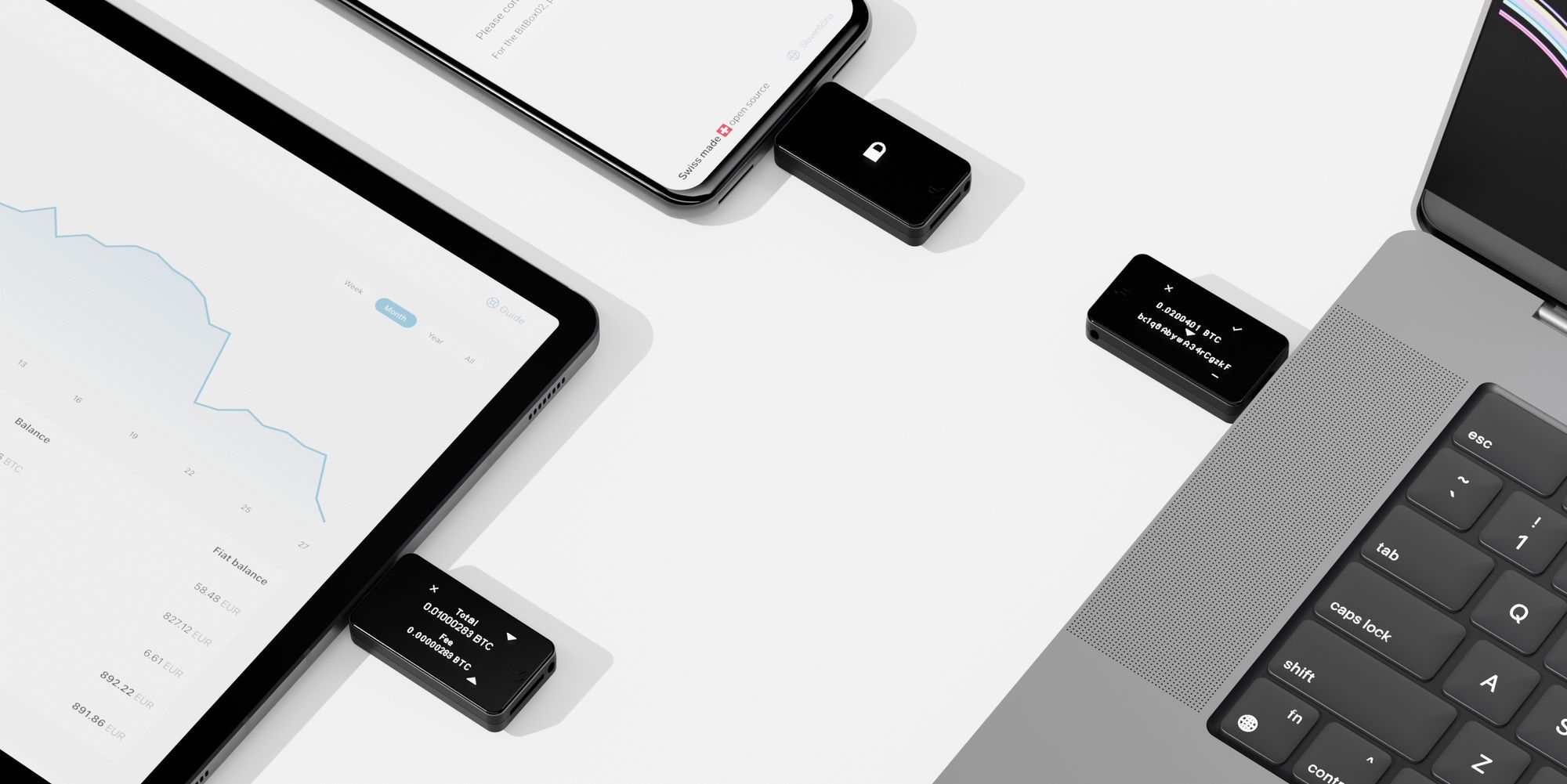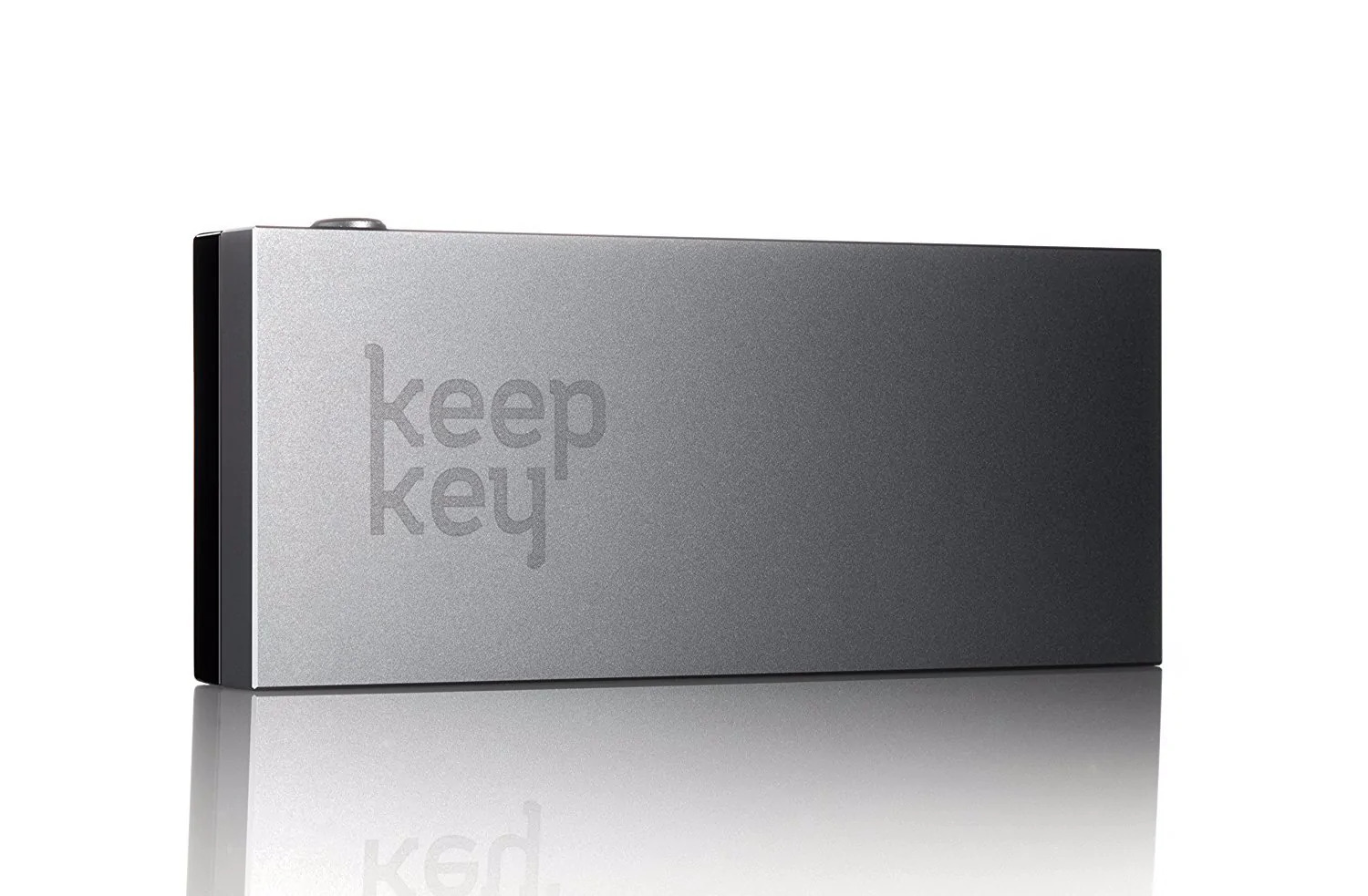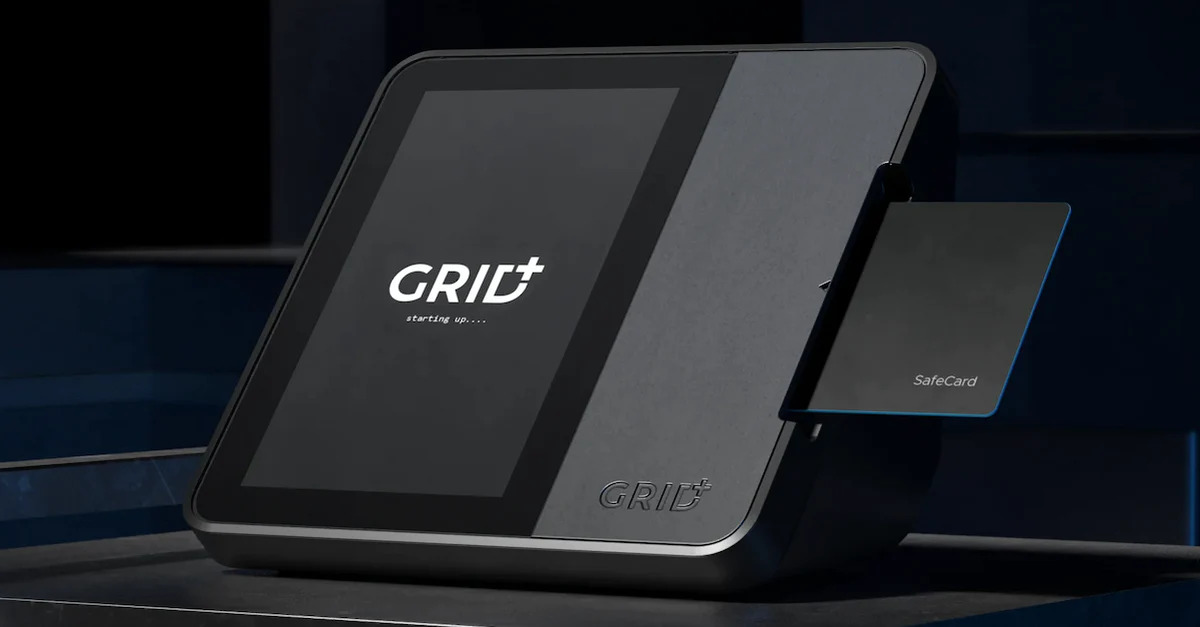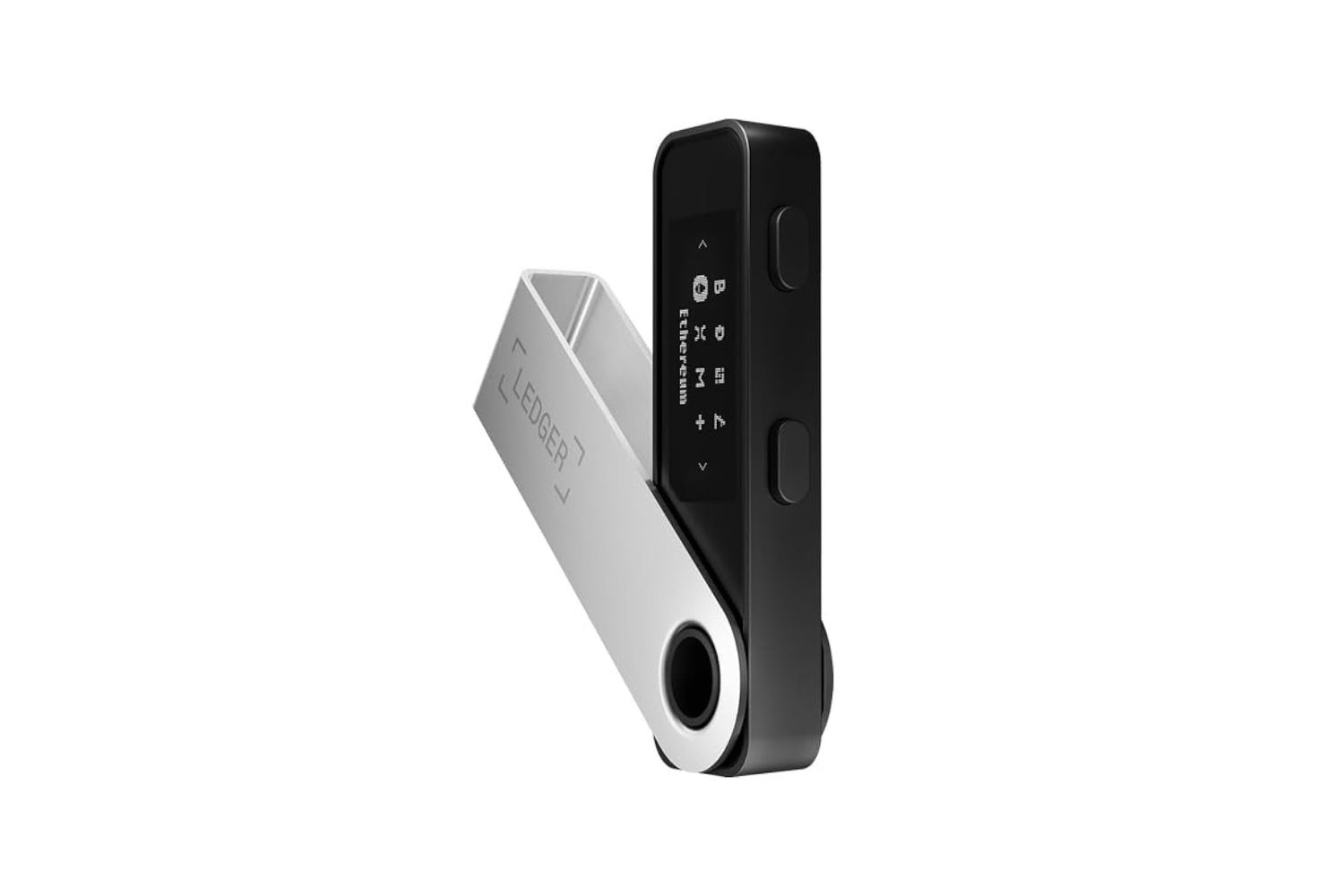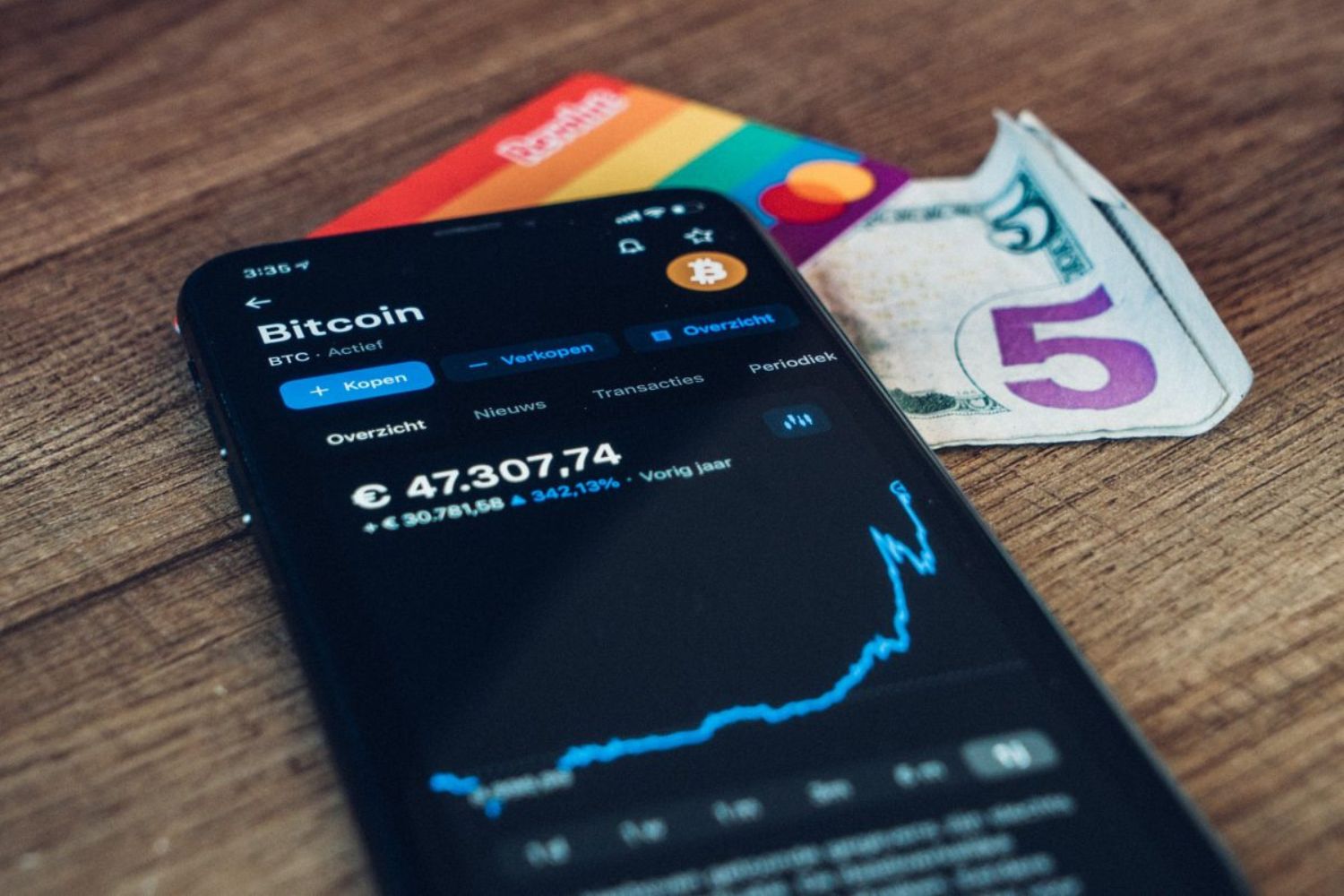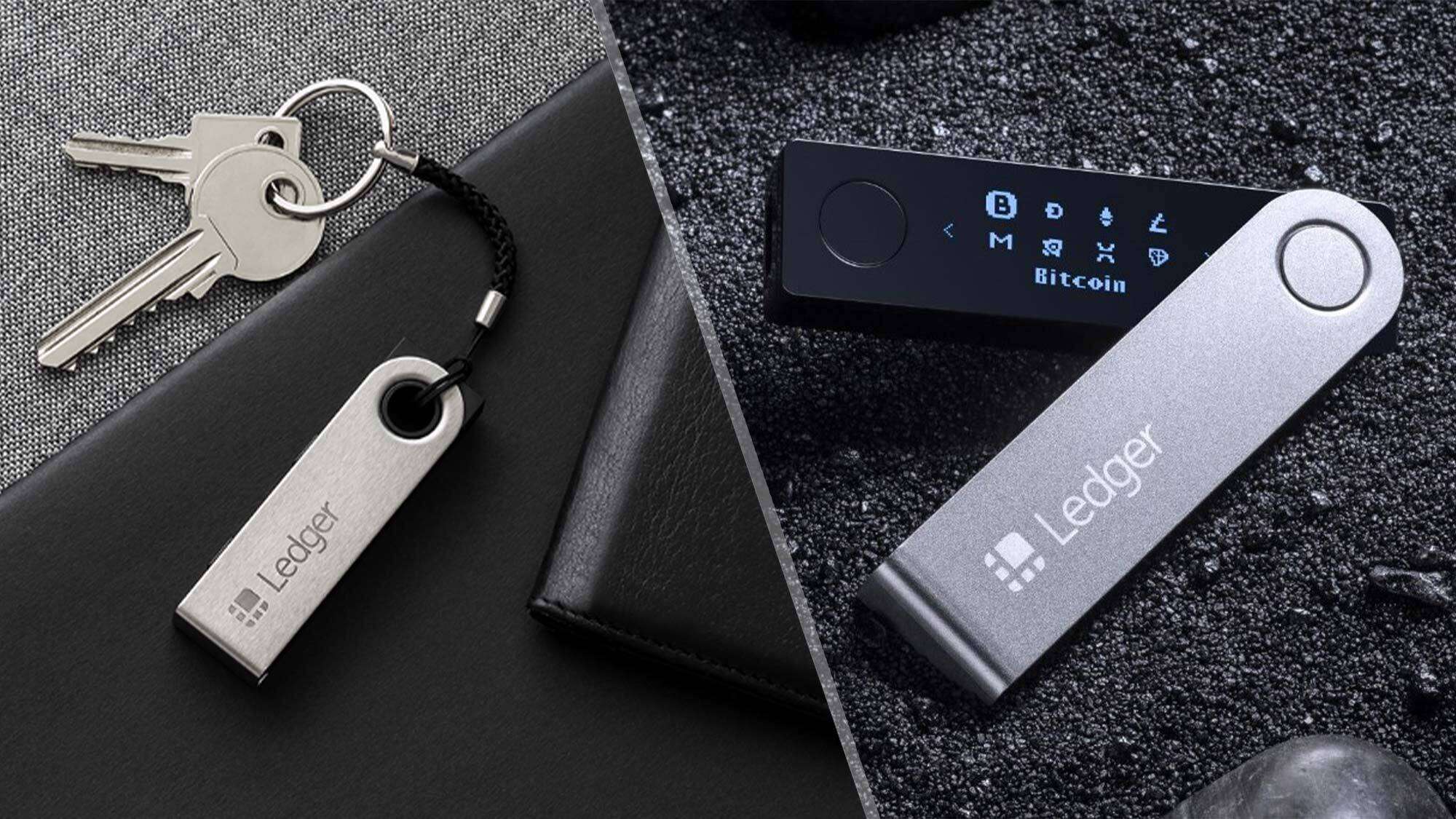Introduction
Welcome to the world of cryptocurrency, where digital currencies have revolutionized the way we make transactions and store value. As the popularity of cryptocurrencies continues to rise, it is important to prioritize the security of your holdings. This is where a crypto hardware wallet comes into play.
A crypto hardware wallet is a physical device that securely stores your private keys which are used to access and manage your cryptocurrencies. Unlike software wallets that are vulnerable to hacking and online threats, a hardware wallet provides an added layer of protection by keeping your keys offline.
In this article, we will explore the importance of using a hardware wallet and provide you with a step-by-step guide on how to set it up, generate and manage your wallet address, store and retrieve your cryptocurrency, and ensure the highest level of security for your digital assets.
Whether you are a seasoned cryptocurrency investor or just getting started, understanding how to use a crypto hardware wallet is vital in safeguarding your funds and ensuring peace of mind. So, let’s dive in and explore the world of hardware wallets to protect and manage your virtual currencies.
What is a Crypto Hardware Wallet?
A crypto hardware wallet is a physical device designed specifically to store your private keys, which are required to access and manage your cryptocurrencies. It is considered one of the most secure ways to store digital assets, as it keeps your keys offline and away from potential online threats.
Unlike software wallets, which are installed on computers or mobile devices and are vulnerable to hacking and malware attacks, hardware wallets provide an extra layer of protection by isolating the private keys within the device itself. This means that even if your computer or mobile device is compromised, your cryptocurrencies remain safe and secure.
Hardware wallets are often shaped like USB drives and come with a small display screen and physical buttons. They have built-in cryptographic algorithms that allow you to safely generate, store, and sign transactions without exposing your private keys to potential hackers.
When you set up a hardware wallet, you are typically required to create a strong and unique password, known as a “seed phrase” or “recovery phrase.” This phrase consists of a sequence of randomly generated words that serve as a backup in case your device is lost, stolen, or damaged. By securely storing this seed phrase offline, you can recover your wallet and access your funds even if the hardware wallet itself is no longer accessible.
It is important to note that while a hardware wallet provides excellent security for your cryptocurrencies, it does not protect against physical theft or loss of the device. Therefore, it is crucial to store your hardware wallet in a safe and secure location, such as a lockbox or a bank vault, to prevent unauthorized access.
Overall, a crypto hardware wallet offers peace of mind and ensures the safety of your digital assets. By keeping your private keys offline and implementing strong security measures, you can confidently navigate the world of cryptocurrencies knowing that your funds are well-protected.
Why Use a Hardware Wallet?
When it comes to securing your cryptocurrencies, using a hardware wallet is one of the most effective and reliable methods. Let’s explore some of the key reasons why you should consider using a hardware wallet:
- Enhanced Security: Hardware wallets offer unparalleled security by keeping your private keys offline. This ensures that your keys are not exposed to potential cyber threats or hacking attempts. With a hardware wallet, your private keys never leave the device, making it highly resistant to online attacks.
- Protection against Malware: Traditional software wallets are susceptible to malware attacks. Hackers can gain access to your computer or mobile devices, compromising the security of your digital assets. Hardware wallets, on the other hand, are immune to malware attacks as the private keys are stored within the physical device and cannot be accessed by external sources.
- Secure Transaction Signing: Hardware wallets have built-in screens and physical buttons that allow you to verify and authorize transactions directly on the device. This ensures that even if your computer is compromised, the transaction details cannot be manipulated, providing an extra layer of security.
- Backup and Recovery: Hardware wallets provide you with a seed phrase, which is a series of words that act as a backup for your wallet. This seed phrase can be used to recover your wallet and access your funds in case your hardware wallet is lost, stolen, or damaged. By securely storing this seed phrase offline, you can rest assured that your funds are protected even if the physical device is no longer accessible.
- Compatibility with Multiple Cryptocurrencies: Most hardware wallets support a wide range of cryptocurrencies, allowing you to store and manage multiple digital assets in a single device. This eliminates the need for multiple software wallets and provides convenience and ease of use.
By using a hardware wallet, you can have peace of mind knowing that your cryptocurrencies are secure and protected against potential threats. Whether you are a casual investor or a seasoned trader, investing in a hardware wallet is a wise decision to ensure the safety and integrity of your digital assets.
Setting Up Your Hardware Wallet
Setting up a hardware wallet is a straightforward process that involves a few simple steps. While the specific steps may vary depending on the brand and model of your hardware wallet, the general process is relatively similar. Here’s a general guide on how to set up your hardware wallet:
- Choose a Reputable Hardware Wallet: Research and choose a hardware wallet from a reputable manufacturer. Popular options include Ledger, Trezor, and KeepKey. Consider factors such as security features, compatibility with your chosen cryptocurrencies, and user-friendly interface.
- Unbox and Initialize the Device: Once you have your hardware wallet, unbox it and ensure that all the necessary components are included. Connect the device to your computer or mobile device using the provided USB cable. Follow the manufacturer’s instructions to initialize the device.
- Create a Strong PIN: During the initialization process, you will be prompted to create a Personal Identification Number (PIN) for your hardware wallet. Choose a PIN that is unique and difficult to guess. This PIN will be required every time you access your hardware wallet and perform transactions.
- Write Down the Seed Phrase: After setting up the PIN, your hardware wallet will generate a seed phrase – a series of randomly generated words. Write down this seed phrase on a piece of paper or a durable material. Make sure to store it in a safe and secure location. Do not share this seed phrase with anyone, as it is the key to recovering your wallet in case of loss or damage.
- Confirm the Seed Phrase: Once you have written down the seed phrase, your hardware wallet will ask you to confirm the words in the correct order. This step ensures that you have accurately recorded the seed phrase and can use it to recover your wallet if needed.
- Install and Configure Wallet Software: To access and manage your cryptocurrencies, you will need to install the corresponding wallet software on your computer or mobile device. Visit the manufacturer’s website and download the appropriate software for your hardware wallet. Follow the installation instructions and connect your hardware wallet to the software.
- Backup Your Wallet: As an additional security measure, you can create a digital backup of your hardware wallet by exporting its public key. This backup allows you to restore your wallet and access your funds even if the physical device is lost or damaged. Store this backup in a secure location separate from your hardware wallet.
By following these steps, you can easily set up your hardware wallet and ensure the security of your cryptocurrencies. It is important to read the manufacturer’s instructions carefully and follow any specific guidelines provided. Once your hardware wallet is set up, you are ready to generate and manage your wallet address, securely store and retrieve your cryptocurrency, and take advantage of the enhanced security features offered by a hardware wallet.
Generating and Managing Your Wallet Address
Once your hardware wallet is set up, you can generate and manage your wallet address. A wallet address is a unique identifier that allows you to receive and send cryptocurrencies. Here’s how you can generate and manage your wallet address using a hardware wallet:
- Open the Wallet Software: Launch the wallet software that you installed during the setup process. Connect your hardware wallet to your computer or mobile device using the provided USB cable.
- Access the Wallet Interface: Once your hardware wallet is connected, the wallet software should recognize the device and display the wallet interface. Depending on the model and software, you may need to enter your PIN or verify your fingerprint to access the wallet.
- Generate a New Wallet Address: In the wallet interface, locate the option to generate a new wallet address. Click on the appropriate button or follow the prompted instructions. The hardware wallet will use its built-in algorithms to generate a unique and secure address for you.
- Copy and Share: Once the new wallet address is generated, you can copy it to your clipboard or share it with others. This address can be used by others to send cryptocurrencies to your wallet. It is important to double-check the address before sharing it, as transactions sent to the wrong address cannot be reversed.
- Manage Your Addresses: Most hardware wallets allow you to manage multiple wallet addresses within a single device. This feature is useful if you want to organize your funds or separate different types of cryptocurrencies. In the wallet software, you should have the option to add or remove wallet addresses and label them accordingly.
- Transaction History: The wallet software should also provide you with access to your transaction history, including incoming and outgoing transactions associated with each wallet address. This feature allows you to keep track of your funds and verify the status of your transactions.
- Security Measures: Remember to follow best practices to enhance the security of your wallet addresses. Regularly update the firmware and software of your hardware wallet to patch any vulnerabilities. Be cautious when sharing your wallet address publicly, as it could potentially be used to track your transactions or associate them with your identity.
By generating and managing your wallet address using a hardware wallet, you can securely receive and send cryptocurrencies while maintaining full control over your digital assets. It is important to regularly backup your wallet, keep your hardware wallet firmware up to date, and remain vigilant against phishing attempts or other forms of online threats.
Storing and Retrieving Your Cryptocurrency
Once you have generated your wallet address, you can securely store and retrieve your cryptocurrency using your hardware wallet. Here’s how you can effectively manage your digital assets:
- Receiving Cryptocurrency: When someone wants to send you cryptocurrency, provide them with your wallet address. Once the transaction is initiated, the funds will be sent to your wallet address. Your hardware wallet will securely store the private keys required to access and manage these funds.
- Checking Your Balance: To view your cryptocurrency balance, open the wallet software connected to your hardware wallet. The software will display the balance associated with each wallet address. Be aware that some cryptocurrencies may require additional steps, such as synchronizing with the blockchain, to accurately reflect your balance.
- Sending Cryptocurrency: To send cryptocurrency from your hardware wallet, open the wallet software and select the option to send funds. Enter the recipient’s wallet address and the amount you wish to send. Confirm the transaction details on your hardware wallet’s screen and authorize the transaction using the device’s physical buttons.
- Transaction Confirmation: After confirming a transaction, your hardware wallet will sign the transaction with its private keys, ensuring the authenticity and security of the transaction. The signed transaction will then be broadcasted to the network, and the recipient will receive the funds in their wallet.
- Retrieving Cryptocurrency: If you need to access your cryptocurrency stored in your hardware wallet, simply connect the device to the wallet software. From there, you can view your balance, send funds, or initiate any other transactions as needed.
- Offline Storage: One significant benefit of a hardware wallet is the ability to store your cryptocurrency offline. This reduces the risk of online threats and hacking attempts. By keeping your private keys offline and securely stored in your hardware wallet, you have greater control over your digital assets.
- Backup and Recovery: Remember to regularly back up your wallet by securely storing your seed phrase in a separate location. If your hardware wallet becomes lost, stolen, or damaged, you can use the seed phrase to recover your wallet and access your funds. Ensure that your backup is kept in a safe and confidential place.
By effectively storing and retrieving your cryptocurrency using a hardware wallet, you can have peace of mind knowing that your digital assets are secure. The offline storage and encryption provided by the hardware wallet mitigate the risks associated with online threats, ensuring the safety of your funds. Always follow best practices, keep your software up to date, and remain vigilant to protect your cryptocurrencies.
Securing Your Hardware Wallet
A hardware wallet provides excellent security for your cryptocurrency, but it is still important to take additional steps to ensure the maximum protection of your digital assets. Here are some key measures you can implement to secure your hardware wallet:
- Choose a Strong PIN: Set a strong PIN for your hardware wallet, consisting of a combination of numbers and letters. Avoid using easily guessable PINs such as birthdays or simple patterns. Change your PIN regularly to minimize the risk of unauthorized access.
- Enable Two-Factor Authentication: Many hardware wallet manufacturers offer the option to enable two-factor authentication (2FA) for additional security. This requires you to provide a second form of verification, such as a fingerprint or a one-time password, in addition to your PIN, to access your wallet.
- Regularly Update Firmware: Keep your hardware wallet’s firmware up to date by regularly checking for firmware updates from the manufacturer. These updates often include bug fixes and security enhancements, protecting your wallet from potential vulnerabilities.
- Protect Against Physical Theft: Store your hardware wallet in a secure location, such as a lockbox or a safe. Keep it out of sight and away from potential thieves. Consider utilizing additional physical security measures, such as tamper-evident bags, to detect if anyone has accessed your hardware wallet without your knowledge.
- Use a Passphrase (Optional Feature): Some hardware wallets offer an optional feature called a passphrase. This is an additional security measure that provides an extra layer of protection for your wallet. It acts as a second password and is required to access your wallet, even if your hardware wallet and seed phrase are compromised. Make sure to choose a strong and unique passphrase and remember it carefully.
- Be Wary of Phishing Attempts: Be cautious when interacting with online platforms and wallets. Phishing attempts are common in the cryptocurrency world, where scammers try to trick you into revealing your private keys or seed phrase. Always double-check the website or application you are using and never enter your seed phrase or private keys on untrusted platforms.
- Backup Your Wallet Regularly: As mentioned earlier, securely backup your hardware wallet by writing down your seed phrase on a piece of paper or a durable material. Make multiple copies of the backup and store them in separate secure locations, away from potential hazards such as fire or water damage.
- Stay Informed: Keep yourself updated on the latest security trends and best practices in the cryptocurrency space. Join reputable communities and forums where you can learn from experienced users and share knowledge. Being informed and staying vigilant will help you identify and mitigate potential risks.
By following these security measures, you can enhance the protection of your hardware wallet and mitigate the risks associated with storing and managing your cryptocurrency. Remember, security is an ongoing process, and staying proactive is key to safeguarding your digital assets effectively.
Best Practices When Using a Hardware Wallet
When it comes to using a hardware wallet to secure your cryptocurrency, there are several best practices to keep in mind. By following these recommendations, you can maximize the security of your digital assets and minimize the risk of potential threats. Here are some key best practices when using a hardware wallet:
- Buy from Trusted Sources: Purchase your hardware wallet only from reputable sources to ensure authenticity. Avoid buying from third-party sellers, as they may sell counterfeit or tampered devices that compromise your security.
- Double-Check Addresses: Before initiating any transactions, double-check the wallet addresses to ensure accuracy. Cryptocurrency transactions are irreversible, meaning that sending funds to the wrong address may result in permanent loss.
- Keep the Firmware Updated: Regularly check for firmware updates for your hardware wallet and apply them promptly. Updates often include security patches and bug fixes that enhance the protection of your wallet against potential vulnerabilities.
- Use Offline Wallet Generation: Whenever possible, generate your wallet addresses on an offline device. This reduces the risk of exposure to online threats during the creation process.
- Enable PIN and Optional Passphrase: Utilize the PIN feature provided by your hardware wallet, and if available, enable an optional passphrase. The passphrase adds an extra layer of protection, requiring anyone attempting to access your wallet to provide both the PIN and the passphrase.
- Regularly Backup Your Wallet: Back up your hardware wallet regularly by securely storing your seed phrase in multiple safe locations. Consider using a fireproof and waterproof storage solution to protect against physical damage.
- Verify Software Authenticity: Ensure that you are using official wallet software provided by the hardware wallet manufacturer. Be cautious of phishing attempts and only download software from trusted sources.
- Use a Dedicated Computer: To mitigate the risk of malware or keyloggers, consider using a dedicated computer or a separate bootable USB drive when accessing your hardware wallet. This minimizes the chances of exposing your private keys to potential threats.
- Protect Your Recovery Phrase: Treat your recovery phrase with the utmost care. Ensure that it is kept in a secure location, away from prying eyes and potential hazards. Consider using a Cryptosteel device or a similar solution for added durability and protection.
- Verify Transactions on the Device: Before confirming any transactions, carefully review and verify the transaction details displayed on your hardware wallet’s screen. This ensures that you are aware of and in control of the funds being sent.
By adhering to these best practices, you can maintain a high level of security when using a hardware wallet. Remember, the primary goal is to protect your private keys and assets from unauthorized access. Stay informed about the latest security trends, exercise caution, and always prioritize the security of your cryptocurrency holdings.
Frequently Asked Questions (FAQs)
Here are some common questions and answers regarding the usage of a hardware wallet:
-
What happens if I lose my hardware wallet?
If you lose your hardware wallet, your funds are still safe as long as you have securely backed up your seed phrase. With the seed phrase, you can recover your wallet and access your cryptocurrencies on a new hardware wallet.
-
What if my hardware wallet gets damaged or stolen?
In the unfortunate event that your hardware wallet is damaged or stolen, your funds are still secure as long as no one else has access to your seed phrase. You can recover your wallet and restore your funds onto a new hardware wallet using the seed phrase.
-
Can I use my hardware wallet with multiple computers or devices?
Yes, you can use your hardware wallet with multiple computers or devices. The hardware wallet stores your private keys and can be connected to any device that supports the wallet software. It does not require any personal information or account registration.
-
Can I store different cryptocurrencies in the same hardware wallet?
Yes, most hardware wallets support a wide range of cryptocurrencies. You can store different cryptocurrencies in the same hardware wallet, making it convenient to manage multiple digital assets in one place.
-
What if I forget or lose my PIN?
If you forget or lose your PIN, most hardware wallets have a built-in mechanism to reset the PIN. However, this process often requires you to restore your wallet using the seed phrase, so it’s crucial to have your seed phrase securely stored and accessible.
-
Is a hardware wallet completely secure?
A hardware wallet provides one of the most secure methods of storing cryptocurrencies. However, it’s important to follow security best practices, such as regularly updating firmware, verifying software authenticity, and protecting your seed phrase, to maximize the security of your hardware wallet.
These are just a few of the most common questions related to hardware wallets. If you have any additional inquiries or concerns, it is recommended to consult the manufacturer’s documentation or reach out to their customer support for further assistance.
Conclusion
Using a hardware wallet is an essential step in safeguarding your cryptocurrency investments. By keeping your private keys offline and providing an extra layer of security, hardware wallets offer peace of mind and protection against online threats.
In this article, we explored the concept of a crypto hardware wallet, its benefits, and the step-by-step process of setting up and managing one. We also discussed best practices for securing your hardware wallet and provided answers to common questions regarding its usage.
Remember to follow the recommended security measures, such as choosing a strong PIN, regularly updating firmware, securely storing your seed phrase, and being cautious of phishing attempts. By implementing these measures, you can ensure the maximum protection of your digital assets.
Whether you are a cryptocurrency enthusiast or a beginner looking to venture into this exciting space, utilizing a hardware wallet is a crucial step to safeguarding your investments. Take the time to research and choose a reputable hardware wallet that suits your needs, and follow the instructions provided by the manufacturer to set it up correctly.
Always prioritize the security of your cryptocurrency holdings and stay informed about the latest security practices in the ever-evolving world of cryptocurrencies. By being proactive and conscious of potential risks, you can confidently navigate the crypto landscape and enjoy the benefits of secure and hassle-free transactions.










